Ilam
OS Grid ref:- SK135508
The highly attractive village of Ilam (pronounced "Eye-lam") is pleasantly situated on the River Manifold around 4 miles from Ashbourne in the Peak District National Park.
Swiss Chalet Style Buildings at Ilam
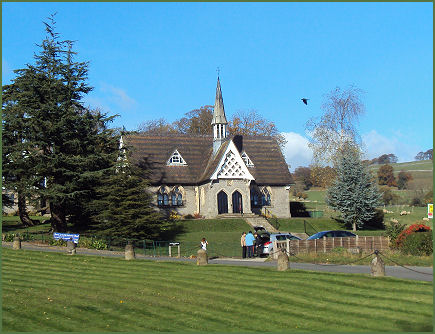
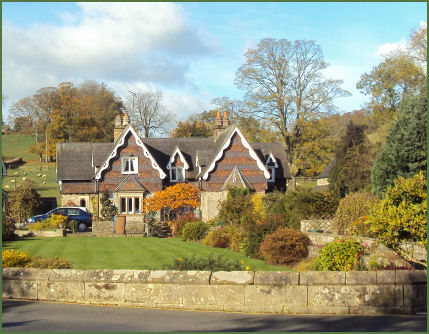
Ilam is very picturesque, with its "Swiss chalet" style houses and matching school house, built in the early nineteenth century by Jesse Russell, the owner of Ilam Hall. Set in the Manifold Valley near the southern end where it joins the River Dove, it also lies close to the beautiful Dovedale valley.
A conspicuous landmark is the village cross, an ornate gothic-style obelisk of local limestone. Standing on a three step plinth, it has two tiers of statues surmounted by a spire with a cross at the top. Erected by Jesse Watts-Russell in 1840 to commemorate his wife, Mary, to mirror Edward the First’s monuments to his Queen, Eleanor of Castille, it bears some resemblance to the decorated facade of Lichfield Cathedral in style.
Ilam Village Cross and Ilam Hall
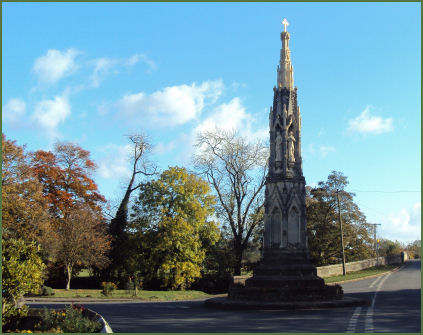

Ilam Hall, a stately home built Neo-Gothic style dates from the 1820s, and now serves as a a youth hostel owned by the National Trust. A previous Tudor hall dating to 1546 once occupied the site. The famous literary critic, biographer, and lexicographer, Dr Samuel Johnson once stayed at the hall, as did the dramatist and poet William Congreave. A small garden has been now been created on the site of the old Italian Garden situated below the stableblock. The grounds are a starting point for one of the most attractive river walks in the area. Ilam Hall is set in large parklands which are open to visitors, there are tea rooms and a National Trust Information centre at the hall and the grounds are a starting point for one of the most attractive river walks in the area.
Ilam church and the River Dove at Ilam
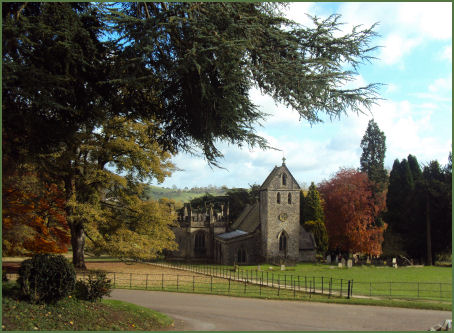
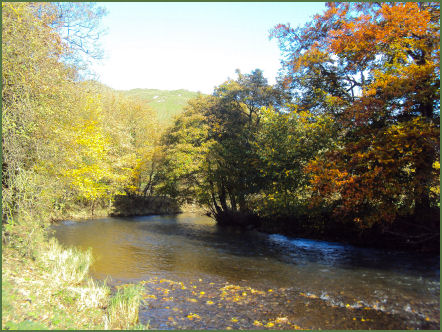
'The Battlestone', in the grounds of Ilam Park, is a Saxon cross unearthed in the foundations of a cottage, during a restoration in 1840, it is thought to date from the eleventh century and commemorates a battle with the Danes. To view the cross, from the church, turn left to the river, then before the river turn right for a pleasant walk along its side. The cross is on the right hand side after about a 10 minutes walk, as a wide meadow arcs to the left.
St Bertram's Well, which is just south of the church, is believed to have provided fresh water in Ilam since Saxon times. Dovedale House is situated near the entrance of Ilam Hall. It was once the vicarage and is now run as a residential Youth centre. The ruins of Throwley Hall, a large medieval manor house and once the seat of the influential Meverall family, are situated three kilometres to the north-west of the village.
The church of the Holy Cross
The church of the Holy Cross, stands apart from the village in Ilam Park, Jesse Watts Russell, the owner of Ilam Hall, had the village moved to its present location in the 1820's to improve the view from the hall, but left the Church where it was. The building has a distinctive saddle-back tower, it was originally Saxon, but following restoration by Sir Gilbert Scott, is now mainly seventeenth and nineteenth century in date. Some small parts of Saxon architecture may still be seen on the south wall where there is a blocked up Saxon doorway. The Saxon font is decorated with carvings of humans and dragons that depict scenes from the life of St Bertram.
Holy Trinity Church
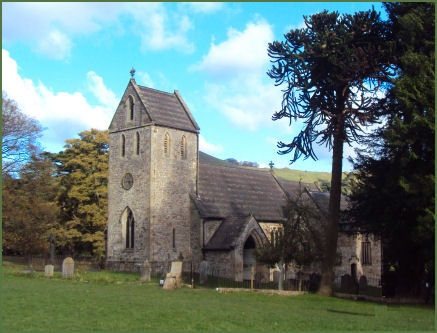
The Chapel of St Bertram, constructed in 1618 by the Meverell family of Throwley Hall to house the saint's tomb, contains the remains and shrine of the St Bertam (or Bertelin). St Bertam lived in the eighth century and was the son of a Mercian king who married an Irish princess. He renounced his royal heritage for prayer and meditation after his wife and child were killed by wolves. He is said to have converted many to Christianity, and his shrine became a place of pilgrimage in the Middle Ages.
The Shrine of St. Bertram

Hanging from the arch, as you enter the side-chapel which houses the shrine, are very rare examples of crantzes (or virgin garlands) dating from the nineteenth century and carried over the coffin of an unmarried girl. A more recent addition is the Chantry Chapel, added by Jesse Watts Russell in a Victorian Gothic style which jars slightly with the rest of the church. The chapel is a mausoleum to Jesse Watt Russell's father-in-law, David Pike Watts.
Anglo-Saxon cross Shaft in the churchyard
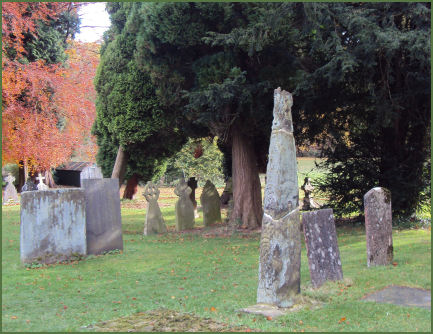
There are also two Saxon stone cross shafts in the churchyard. The smaller eastern fragment appears to have been the top of a cross, and the taller western cross, has been joined together again.
A walk from Ilam to Dovedale
Distance- 1.5 miles (2.4km)
*Commencing at Ilam Park follow the footpath towards Ilam church.
*Pass the church and continue into Ilam village until arriving at the Ilam Cross. Continue along the road.
*On leaving the village village at a layby, cross the road, pass through a gate and ascend a short, steep slope to reach a footpath. Turn right on to the path and go through a stile into the fields.
* Follow the path across the fields behind the Izaak Walton hotel. Cross a stile and continue descending along the footpath to reach a road. Turn left and walk along this path, with the river Dove on your right, to enter Dovedale.
* Cross the stepping stones to continue your walk, or retace your steps to return to Ilam Park.
Nearby places of interest
Ilam Park Beautiful Ilam Country Park is situated at the Peak District village of Ilam to the north west of Ashbourne. The park covers 158 acres (0.64 km2) on both sides of the River Manifold.
Dovedale, a dramatic limestone ravine, with its mpressive rock outcrops and tranquil woodlands is arguably the prettiest of the dales in the Peak District National Park and is owned by the National Trust.
The Manifold Valley, which runs almost parallel with Dovedale, has been described as the 'Switzerland of Staffordshire' and offers some of the most spectacular scenery in the Peak District National Park.
Biddulph Grange, one of Britain's most exciting and unusual gardens, was created by the horticulturalist James Bateman (1811–1897), for his large collection of plants from around the world.
Haddon Hall near Bakewell, is an architectural gem. Dating back to the eleventh century, the hall has been described as "the most complete and most interesting house of [its] period", it is the finest example of a medieval manor house currently in existence in England.
